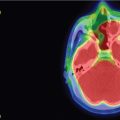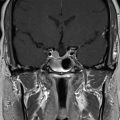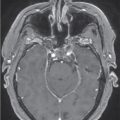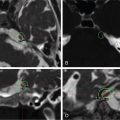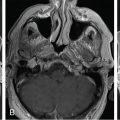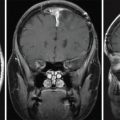| SKULL BASE REGION | Right cavernous sinus |
| HISTOPATHOLOGY | Meningioma, WHO Grade 1 |
| PRIOR SURGICAL RESECTION | Yes |
| PERTINENT LABORATORY FINDINGS | N/A |
Case description
The patient is a 76-year-old male with a known history of a large, cavernous sinus meningioma (CSM) status post first subtotal microsurgical resection around 21 years prior to presentation, with a residual intracavernous component. The tumor recurred, necessitating a second microsurgical resection at another institution, where the histopathologic diagnosis remained WHO grade 1 meningioma. We recommended stereotactic radiosurgery (SRS) to the residual tumor ( Figure 5.24.1 ) using Gamma Knife, and the patient agreed to this intervention ( Figure 5.24.2 ).
| Radiosurgery Machine | Gamma Knife – Perfexion |
| Radiosurgery Dose (Gy) | 12, at the 50% isodose line |
| Biologically Effective Dose (Gy) | 73.06 Gy |
| Number of Fractions | 1 |


| Critical Structure | Dose Tolerance |
|---|---|
| Optic pathways |
|
| Cavernous internal carotid artery (ICA) |
|
| Cavernous sinus neural contents | Cranial nerves within the cavernous sinus are more radioresistant compared to the optic nerve; however, they are considered more sensitive in case of prior irradiation, during which a maximal dose of 8 Gy to the optic apparatus is a safe choice |
Stay updated, free articles. Join our Telegram channel

Full access? Get Clinical Tree



